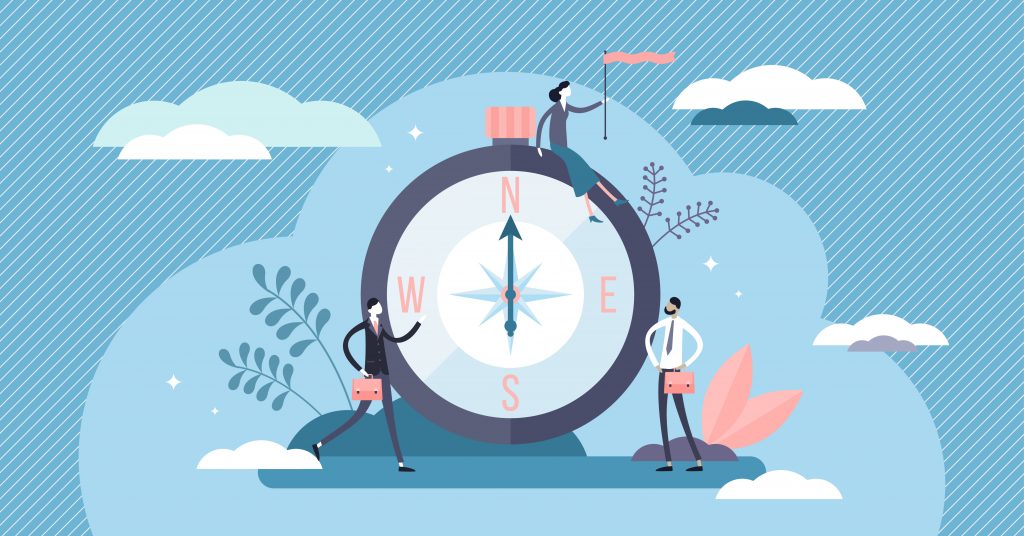
If you’re feeling anxious, you’re certainly not alone. Feeling anxious is a normal response to challenging situations. But without proper management, anxiety can turn into a serious problem that can take a toll on relationships, work, health and more. The good news is that you can effectively treat anxiety and learn to deal with challenges in healthy ways.To better understand anxiety and what actions to take, we spoke with Rosan Gomperts, L.C.S.W. and Director of the Stanford Faculty Staff Help Center.
“Anxiety” is a diagnostic term, whereas “stress” and “worry” are experiences.
Anxiety, worry and stress are all terms people use to describe similar experiences. While the physical, emotional and cognitive symptoms of all three can be quite similar, it’s important to understand the differences to determine the best form of treatment.
Stress is commonly described as having inadequate time or resources to accomplish specific objectives. Similarly, some people experience stress as an overburden of pressure to accomplish specific tasks or manage many things. These experiences create a perceived lack of control that is uncomfortable but manageable, and eventually pass as circumstances shift.
Worry is primarily a cognitive experience that helps us analyze risk and formulate solutions to problems. It is generally helpful in navigating and managing challenges.
However, if you are exposed to the stressor on an ongoing basis, without the proper skills and support, worry (and stress) can develop into anxiety.
It is common to experience short-term anxiety related to specific actions, like public speaking or test-taking, or during major life events, like relationship changes or job transitions. These situations can trigger symptoms such as changes in appetite, sleep or concentration, which make it difficult to function well during specific, anxiety-provoking times of life. However, the symptoms are tied to a specific action or issue, and the anxiety state has a beginning, middle and end.
In contrast, chronic anxiety manifests as an inability to control thoughts, emotions and physiological responses on an ongoing basis. People with this form of anxiety experience a persistent fear that could have a specific focus, like getting sick, or an underlying sense that something could go wrong at any moment.
This type of anxiety is severe and persistent and can impede your functionality in one or more ways, for example, inability to focus at work or engage in healthy relationships.
Temperament, genetics and behavior all play a role in the development of anxiety.
Anxiety can have a genetic component. Many people with clinical anxiety can identify one or more people with anxious symptoms or behaviors in their family. But anxiety can also be connected to a person’s individual temperament, which is different from genetics. People with a classic “type A” temperament, who are proactive and like to plan for what’s next, can be more prone to develop anxiety, especially in situations in which they experience little or no control.
Physiological changes can also play an important role in the development of anxiety. For example, anxiety is a common symptom of perimenopause for women, and some men can experience chemical shifts at certain times in the lifespan, especially around mid-age.
Human behavior plays a huge role in the development of anxiety. Habits like skipping meals, frequent media exposure, procrastination and overcommitment can create or increase anxiety. Anxiety is a pattern that develops over time, and it is something we have a degree of control over. One anxious thought can create a habit of rumination, and everyone has the capacity to develop anxiety by focusing on fearful or undesirable outcomes.
More people are experiencing anxiety than ever before.
A 2018 poll indicates anxiety is on the rise. Theories on why include increasing competition and slimming definitions of success, which can produce a sense of pressure that can develop into anxiety, especially for adolescents and parents of adolescents.
Additionally, the growing accessibility of information through technology and media can lead people to feel and believe that the world is becoming more dangerous, despite research suggesting that dangers like war and violence have decreased over time. The amount of information we are subjected to on a daily, hourly and even momentary basis is significantly higher than it ever has been. The sheer volume of information we are receiving can be overwhelming and lead to stress or anxiety. Additionally, the attention-grabbing, and often frightening content of what is being shared in traditional and new media heightens anxiety for many people.
Anxiety comes with high costs and low rewards.
Unlike stress and worry, anxiety can keep you stuck in particular thought patterns that do not offer much payoff and can decrease your quality of life. Anxiety can cause discomfort and fear that can negatively impact work, sleep, nutrition and other areas. Over time, the tolls of anxiety can contribute to the development of depression. For this reason, it is fairly common for anxiety and depression to present together. Long-term stress and anxiety can also weaken your general well-being and immune function.
Anxiety may also lead you to avoid doing things you would have otherwise enjoyed or to isolate yourself from friends or loved ones. Anxiety can take the enjoyment from life and prevent you from experiencing life freely on a day to day basis.
In severe cases, anxiety can lead to panic attacks — sudden episodes of intense fear that come on without the presence of immediate danger. Panic attacks are characterized by severe physiological symptoms that lead a person to feel so out of control that they will often seek immediate medical attention. These scenarios are so uncomfortable that they often become feared experiences that can increase baseline anxiety.
Creating a no-risk life poses its own risks.
There is some level of uncertainty to everything, and people who try to control that ultimately end up feeling more out of control. Trying to eliminate all risk poses the threat of an unlived life.
Seek support when anxiety becomes evident.
Treatment is critical for anxiety management. It is never too soon or too late to seek support. The best time to reach out is when your symptoms become evident.
People who suddenly start experiencing anxiety should seek help — even though they may not feel that it is impeding on their lives yet. Anxiety is highly treatable in its early stages. Additionally, unexpected anxiety can be a symptom of other physiological conditions. Speak with a doctor if the symptoms seem to come out of nowhere and you have not experienced them before.
Chronic anxiety can feel normal to long-time sufferers. Even if it is something you’ve gotten used to, it is something that is treatable with proper treatment, and it is never too late to seek support.
Another good indicator for seeking treatment is when family, friends or colleagues suggest getting help. Being so entrenched in the worry can make it hard to see a clear perspective of the situation, and a trusted confidant can often provide insight.
You can learn skills to manage anxiety yourself.
Anxiety treatment involves increasing your self-awareness by paying close attention to your thoughts, behaviors and emotions and using skills to navigate the experience.
According to Gomperts, the most important strategy to learn when working with anxiety is identifying the first physiological-state associated with anxiety, such as muscle tension or shortness of breath. Missing this front-end signal can lead to the development of a physiological and cognitive state that is hard to break. Oftentimes, when this state of anxiety has developed, people have to wait until the symptoms decrease naturally over time, which is why it is important to manage the symptoms as quickly as possible.
For most people, the first indicator of anxiety is a physical sensation, which is why physical strategies tend to be the most effective for symptom management:
-
- Deep breathing can help to calm the nervous system, especially when focusing on the exhale. Try breathing in for a count of two and exhaling for a count of four, or inhaling for three and exhaling for six. After three to four sets of this breathing technique, most people experience a notable decrease in symptoms.
- Progressive muscle relaxation consists of tensing and releasing various parts of the body at specific intervals to focus on something other than the particular worry.
- Exercise relaxes your body and allows you to better use cognitive strategies. A short walk or 10-15 minutes of yoga is enough to help.
- Mental scanning, a cognitive strategy, helps you understand anxiety triggers better by evaluating what made you anxious (such as a person you feel uncomfortable around). This can help to validate your experience, thereby decreasing anxiety symptoms.
Self-compassion is key.
Anxiety is such a strong experience that even people with strong skills can have a hard time managing it, especially if they don’t catch it early enough. In this case, self-talk can be helpful. Practicing self-compassion by acknowledging the difficulty of the situation, remembering that you are not alone and that it will pass can be helpful in riding out the wave.
Medication may be helpful in some cases.
Gomperts sometimes suggests that people with chronic anxiety or panic attacks consider medication, especially if their condition is impeding their functioning and has not responded to non-medical treatment interventions, like therapy and skills.
“It’s easy to learn about skills, but it’s hard for people to use them when they’re really anxious,” says Gomperts. “Short-term medication can be particularly helpful to calm the nervous system and help people remember the state that they are striving to achieve. A common misperception around medication is that it will change a person. Medication does not change a person. Rather, it changes the way they perceive their stressors so they appear less threatening.”
Stanford resources are available to help you manage anxiety.
There are a number or short, skill-based videos offered on the Faculty Staff Help Center website that you can use to help manage the symptoms of stress and anxiety. The Faculty Staff Help Center offers a lot of great information, including resources for support during challenging times.
Speaking with a therapist at the Help Center is a very easy strategy, too. Stanford faculty, staff, postdocs, retirees, and their families receive up to ten sessions of free therapy. Even if people just come once, they often walk away with a stronger sense of control and helpful tools for managing stress — and that might be enough.
Additionally, Wellness Coaching sessions, which can also be helpful in providing resources and making decisions for managing stress. They also offer an eight-week online program in Mindfulness-Based Stress Reduction, which is an evidence-based treatment program that teaches skills that are clinically effective for managing anxiety.
Anxiety can be serious, but it is also highly treatable with both medical and non-medical interventions. Gomperts encourages people not to wait to get support around it.
“Especially now, there should be no stigma. I hope people recognize anxiety is a normal response. It is just a response that could use some outside support to manage.”
Mia Primeau
October 2020


